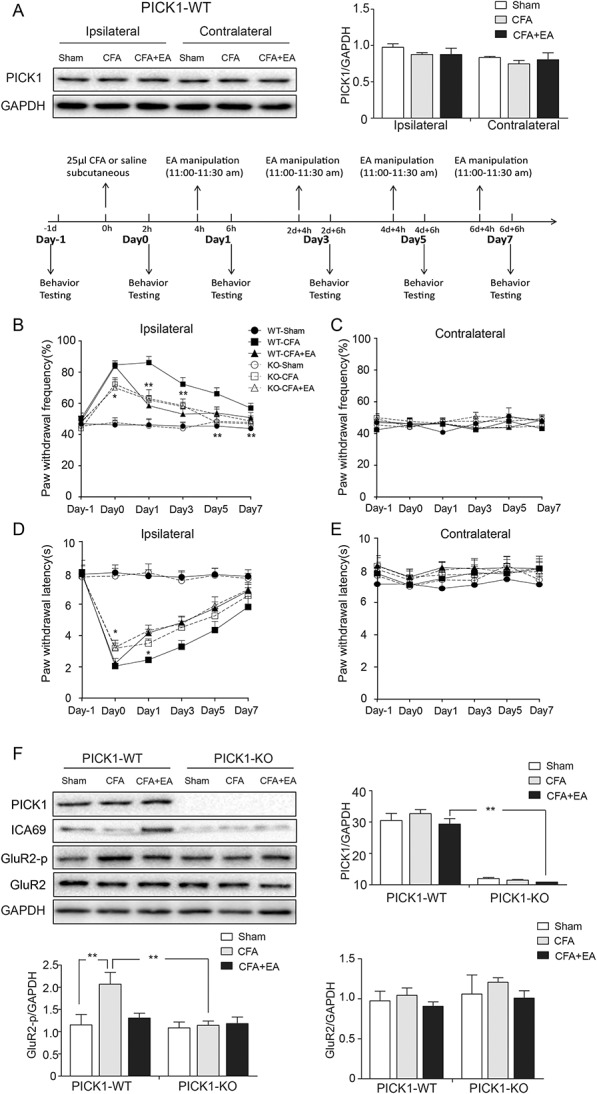Figure 4.

Effects of EA on CFA-induced hyperalgesia and the protein levels of PICK1, ICA69, GluR2-p, and GluR2 in PICK1-WT and PICK1-KO mice. (A) Western blot bands of PICK1 and quantitative analyses of PICK1 on both sides in PICK1-WT mice. (B) Reduction in paw withdrawal frequency of the KO-CFA group compared with the WT-CFA group on the ipsilateral side (n = 13; *P < 0.05); the effect was particularly obvious at day 0, day 1, day 3, day 5, and day 7 (n = 13; *P < 0.05, **P < 0.01). There was no difference between KO-CFA+EA and KO-CFA groups (n = 13; P > 0.05), and there was no difference between KO-CFA and WT-CFA+EA groups (n = 13; P > 0.05). (C) No difference among the 6 groups on the contralateral side (n = 13; P > 0.05). (D) Increase in paw withdrawal latency of the KO-CFA group compared with the WT-CFA group on the ipsilateral side (n = 13; *P < 0.05); the effect was particularly obvious at day 0 and day 1 (n = 13; *P < 0.05). There was no difference between KO-CFA+EA and KO-CFA groups (n = 13; P > 0.05), and there was no difference between KO-CFA and WT-CFA+EA groups (n = 13; P > 0.05). (E) There was no difference among the 6 groups on the contralateral side (n = 13; P > 0.05). (F) Representative Western blot bands of PICK1, ICA69, GluR2-p, and GluR2 in PICK1-WT and PICK1-KO mice, and quantitative analyses of these bands (n = 3, group values are indicated by mean ± SEM; **P < 0.01). CFA, complete Freund adjuvant; EA, electroacupuncture; KO, knockout; WT, wild-type.
